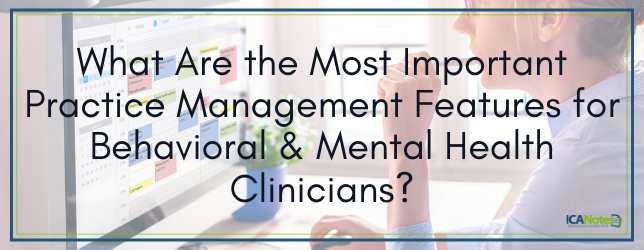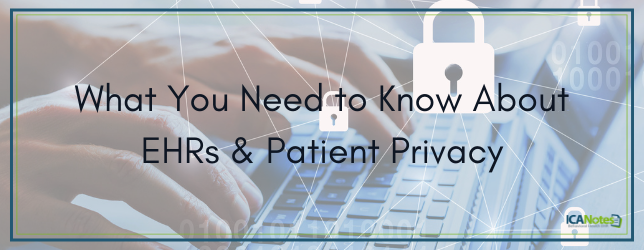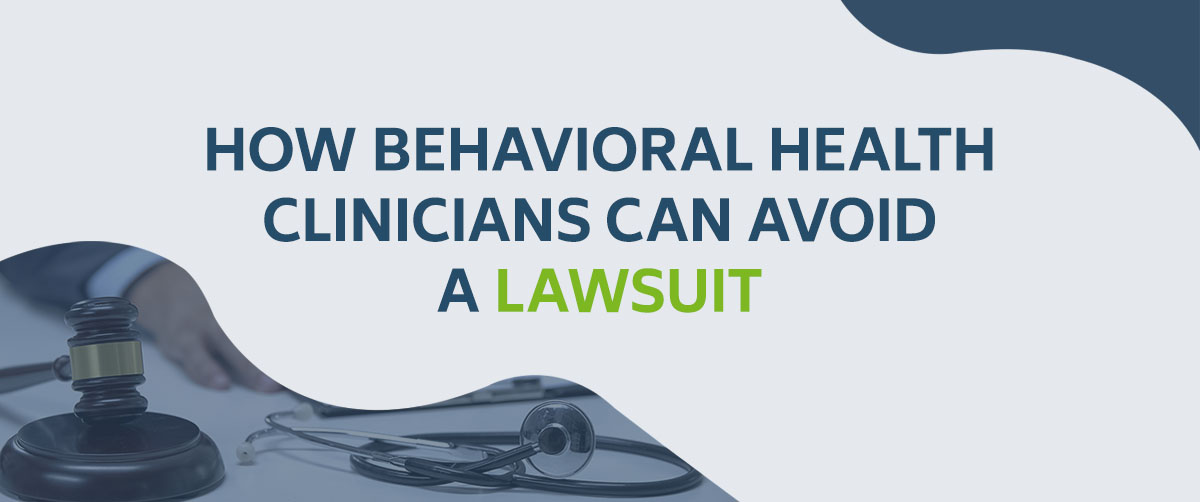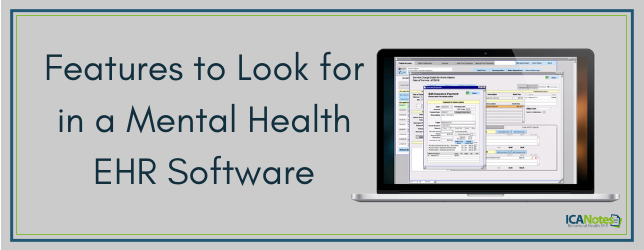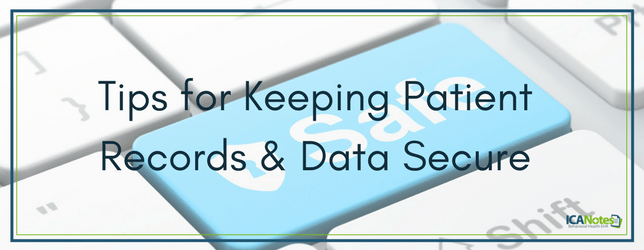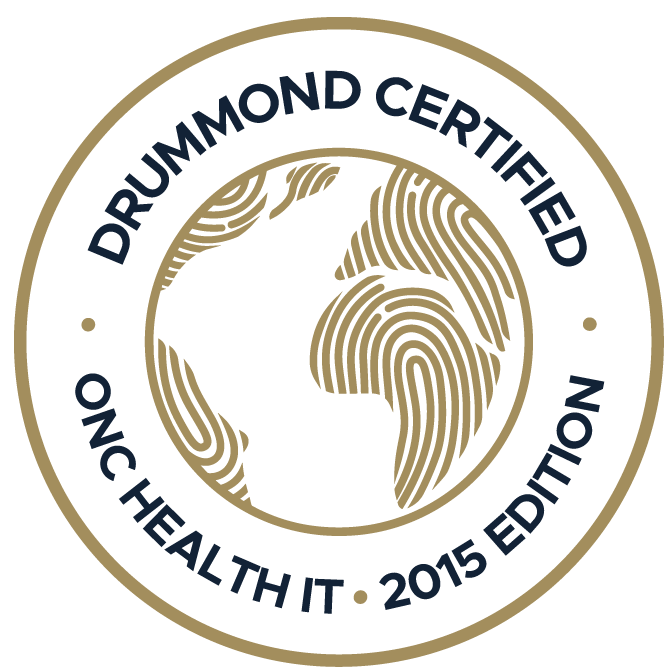Interoperability
Interoperable EHR Solutions
The term interoperability describes the capability of various health information systems, applications and devices to connect to each other. They must be able to coordinate and exchange information within and between organizations and allow stakeholders in those organizations to use the data to optimize their patient's health. Health information exchange (HIE) architectures that are interoperable allow for the sharing of data across secure connections no matter where the data came from or the other applications it has gone through, without any effort required from the end-user.
Start Free Trial
Types of Interoperability
There are four degrees of interoperability, all of which may be present in the same organization:
- Foundational interoperability refers to the ability of one system to send data to and receive data from another system. End-user intervention or other technology may be necessary to facilitate the reception and interpretation of the data.
- Structural interoperability creates a unified format for exchanging data and defines the data exchange's syntax, ensuring that the clinical and operational meaning of the data remains unaltered in transmission between systems.
- Semantic interoperability allows two or more systems to exchange information as well as interpret it using a standard vocabulary. This allows more efficient interpretation of information from different systems while reducing the need for intervention by the end-user.
- Organizational interoperability addresses the seamless and timely communication of data through technical components as well as elements of policy from social and organizational standpoints. Including organizational considerations allows interoperability to become more efficient and better integrated into processes or workflows.
What is the difference between interoperability vs. integration? Interoperability refers to the ability of disparate systems to work together, while integration refers to all the parts of one system blending into one unified functioning whole.
What Are the Benefits of Interoperability?
The behavioral health field lags behind medical care in terms of electronic health records (EHR) adoption as well as interoperability. However, increased interoperability provides multiple benefits for clinicians and their patients.
Fully Integrated Mental Health Care
Integrated care is the coordination of general health care with behavioral health care in a systemic manner that coordinates mental health and substance abuse services with primary care. This approach results in the best outcomes for people with multi-faceted health care requirements.
Interoperability is essential in a system that hopes to become fully integrated. If your EHR system cannot connect to the system your patient's primary care provider uses, you can't access important records or results in a timely manner, and there is no guarantee that the information will be complete when you do obtain it. With interoperability, authorized providers can expect to receive almost real-time updates as they are made to a patient's chart, making true collaborative care possible.
Greater Continuity of Care
When a patient goes to a new doctor or mental health professional, a great deal of vital information can fall through the cracks. Without interoperability, information must be gathered from the patient and requested from one or more other health care providers. This patchwork of information may trickle in through paper copies, faxes and secure email messaging, and is likely to be missing some elements.
In an interoperable system, every relevant piece of patient information is entered into a database as it is collected. Rather than requesting a history of lab work and waiting for it to arrive, you would be able to connect directly to the database containing the patient's information and have the information you need to start treating them effectively. Interoperability is especially beneficial if you work within a large practice or frequently see patients who receive treatment from multiple physicians. It reduces redundant communications and time spent tracking down essential information when treating new patients.
Easier Measurement-Based Care
Measurement-based care (MBC) involves pursuing clinical care based on patient data collected during treatment over time. It is a central element in many evidence-based practices and has a multitude of benefits for patient outcomes. For example, it can streamline the process of assessment and help clinicians make differential diagnoses. While it is possible to perform MBC using only the data and observations from your own EHR, incorporating information from primary care can greatly enhance the insights you may gain.
Seamless Information Exchange
One of the greatest burdens on clinicians and physicians trying to work in an integrated health system is the administrative activity required to arrange the exchange of information. In traditional forms of information exchange, someone has to facilitate the transfer. Whether that's faxing a record or physically mailing a lab result, data exchange without interoperability is time-consuming and tedious for everyone involved.
Full interoperability greatly increases the efficiency of care by removing barriers to data access for approved providers. Rather than going through the multi-step process of requesting and receiving information, you can obtain the information you require through a compatible HIE. This allows much more prompt diagnoses and treatment for your patients.
Comprehensive Record-Keeping for Mental Health Treatment
A recent study on EHR use revealed that a lack of interoperability has profound impacts on the completeness of patient records when it comes to mental health treatment. Researchers looked at data from a physician practice and compared it against claims data obtained from an insurer to investigate "missingness" of information on the physician EHR.
About half of the days of outpatient care listed in claims couldn't be matched to any encounters recorded in the primary care provider's EHR, and about 27% of patients with bipolar disorder or depression had no record of their diagnosis in the EHR. These disturbing figures arise in large part due to a lack of EHR interoperability between off-site clinician providers and primary care providers. Interoperability's impact is crucial to getting complete patient records, which is one of the most pressing goals of EHR systems.
What Is the Purpose of Interoperability for EHR Systems?
EHRs are the front line of patient data collection. Before any information can be transferred through HIE, it must be collected and stored in the EHR at the point of care. That means if your EHR isn't compatible with the exchange or other provider EHR you need to interact with, you're stuck transmitting information more manually.
While the Office of the National Coordinator for Health Information Technology (ONC) has a program certifying EHRs, interoperability is not currently a requirement with standards to be upheld. Due to this lack of uniformity, there are hundreds of EHR vendors with differing systems and differing levels of interoperability ranging from minimal to substantial.
Vendors who push the bounds of their current interoperability capabilities do so because they understand that the future of EHR systems lies in their ability to work with as many other systems as possible.
What Are the Goals Interoperable Systems Hope to Achieve?
The benefits of interoperability are clear, but what about the end goals of increasing this capability in EHRs and HIE? These five are a start.
A Learning Health System
In a learning health system, every stakeholder can contribute, share and perform analysis on data securely and efficiently. These systems are defined by continuous learning cycles that use data to create new information. That new information can then be consumed by a vast array of EHRs and HIEs.
Learning health systems are inclusive of more stakeholders than there in the current system. Beyond the clinical care delivery teams, these stakeholders could include individuals as far removed as researchers and community-based advocacy organizations. Learning systems are also designed with a framework toward scalability, with the assumption that developing technology will have to be compatible with future updates.
Improved Patient Engagement
Interoperability places more power in your patients' hands. Behavioral health care is notoriously difficult to engage patients in, and giving them control over their information is a meaningful way to increase their level of engagement in treatment.
As it advances, interoperability will result in an enhanced presentation of patient data. For example, patients with a history of depression in their records might be able to receive helpful information on the condition through a patient portal. The ability to manage information in an interoperable system gives patients a greater incentive to use that information to the advantage of their physical and mental health.
Greater Accessibility to Necessary Care
Rural communities face unique challenges in the delivery and coordination of care. Patients have to travel long distances to reach each point in their health care system, and the facilities they use are often limited in the selection of services they provide. The more complex a person's behavioral and physical health needs, the more effort they must put in and the less likely they are to receive the full spectrum of care required.
Health IT innovations like telehealth and secure messaging have reduced the burden of travel on rural residents, but increasing interoperability between systems will increase the network of providers that can serve rural communities.
Reduced Error
The fact is that the less information a provider has about their patient, the more prone they are to making errors. These errors can result in any outcome from small inconveniences to the death of a patient, and many errors can be avoided with clear and complete information afforded by interoperability.
Return on Investment
When an organization or practice makes an investment in EHR, there is the hope that the money will be recouped over time. To get the full value out of the technology, it needs to be useful in as many situations as possible. If your behavioral health EHR isn't compatible with the HIE used by your local hospital, for example, its value to your practice is extremely limited.
What Laws Impact Interoperability?
A variety of laws underpin the push toward interoperability. Here are five of the most critical to be familiar with.
HIPAA
As a clinician handling sensitive information, you are very familiar with the basics of the Health Insurance Portability and Accountability Act (HIPAA) of 1996. The tight restrictions on how patient information may be shared have meant that behavioral health providers often err too far on the side of caution and are reluctant to share certain information even when its transmission is permitted by HIPAA.
The ONC has recently clarified the role of HIPAA in interoperability by releasing a series of fact sheets addressing frequently-asked questions from providers. Permitted Uses and Disclosures are one of the concepts to be familiar with. They are situations where a provider is permitted to use and share protected health information (PHI) without obtaining written authorization from the patient first. Understanding Permitted Uses and Disclosures is key to achieving HIPAA-compliant interoperability.
The HITECH Act
The American Recovery and Reinvestment Act (ARRA) of 2009 marked the first concentrated effort at implementing HIE. One portion of the legislation, the Health Information Technology for Economic and Clinical Health (HITECH) Act, was created in part to support interoperability through incentives for "meaningful use" of EHRs. To receive ongoing financial incentives, providers had to demonstrate that they were keeping up with the three stages of meaningful use, the second of which demanded more rigorous HIE.
Despite near-universal adoption of EHRs, as of 2015, only 6% of health care providers were able to share data with clinicians using a different EHR system. Due to this dismal performance, meaningful use was phased out in favor of a new program from the Centers for Medicare & Medicaid Services (CMS).
MACRA
In 2016, CMS released the final rule for the Medicare and CHIP Reauthorization Act (MACRA). MACRA marked the transition from the stages of meaningful use to an incentive program that rewards clinicians for higher-value care. Many of the paths providers can take to higher-value care can be achieved through improving interoperability. Under MACRA, providers must verify that:
- Their EHR is certified by the ONC.
- Their EHR technology allows patients to access their own information.
- Their EHR technology "allow[s] for timely, secure, and trusted bi-directional exchange" of patient information.
MACRA is one of the laws that most explicitly promotes the interoperability of EHRs. While providers are not required to participate in the incentive program, they are leaving money on the table and falling behind in the coordination of care if they don't.
The 21st Century Cures Act
The Cures Act was signed into law in December 2016. It contains several provisions that directly impact interoperability:
- Trusted Exchange Framework and Common Agreement (TEFCA): Covers policies, technical standards and procedures that enable health information networks to exchange data regardless of the developer and where the data is stored.
- U.S. Core Data for Interoperability (USCDI): Specifies a minimum number of data classes necessary to facilitate interoperable HIE. This provision is critical in ensuring the interoperability of future systems.
- Information Blocking Definition: Some providers will actively hamper interoperability to serve their own interests. This provision defines what constitutes information blocking and what does not.
- EHR Reporting Program: The Cures Act stipulates that the ONC create an EHR reporting program allowing public viewing of information on certified health IT products.
FHIR 4
Fast Healthcare Interoperability Resources (FHIR) is a standard rather than a law, but it is recognized as crucial by most health IT experts. FHIR 4 is more functional and flexible than other standards. It supports varying levels of granularity, pluggable apps and is bi-directional — a core element of interoperability. Future changes to FIHR will also be backward compatible with FIHR 4, which will likely lead to significant adoption rates among developers.
Challenges to Achieving Interoperability
As demonstrated by the struggle to achieve meaningful use in the realm of HIE, some significant challenges to achieving interoperability remain. These include the following:
- Technical barriers: The lack of universal standards for product development, data quality and data matching make it difficult to ensure uniform implementation of interoperability. Without fully finalized regulation, interoperability can't become the default standard.
- Financial barriers: The development, implementation and optimization of various health IT tools are costly, especially in such a rapidly-evolving industry. Despite CMS incentives, the affordability of interoperability is an issue.
- Trust barriers: There are multiple competitive reasons to restrict the transmission of data. The information blocking definition in the Cures Act will help overcome this barrier, but it still remains a problem today.
- Reporting barriers: Some of the federal reporting requirements for providers are burdensome and lead to pushback in implementation.
- Usability barriers: Navigating the multiple systems in an interoperable network can be difficult due to huge variations in user interfaces. Provider fatigue with learning new software can stifle the implementation of interoperability.
There are many moving parts in an interoperable system, and reducing the friction between them is necessary to make universal compatibility between health IT systems possible.
The Future of Interoperability
Achieving interoperability is one of the most ambitious strategies to increase the impact of care for medical and behavioral health professionals alike. In 2014, the ONC created a 10-year interoperability timeline outlining the steps necessary to make nationwide interoperability a reality. The plan is founded on five building blocks, the first of which we are seeing in development today. The ONC's Standards & Interoperability (S&I) framework sets forth core standards and functions necessary. They include:
- Methods for accurately matching individuals, providers and information across multiple data sources.
- Directories that make data and its sources discoverable by humans.
- Methods for data access authorization.
- Methods for data access authentication.
- Methods for keeping data secure as it moves from source to user and vice versa.
- Methods for keeping data granular to facilitate reuse.
- Methods for handling structured and unstructured data from varied sources.
The other four building blocks in the ONC's roadmap are:
- Certification to support adoption and optimization of health IT products and services.
- Privacy and security protections for health information.
- Supportive business, clinical, cultural and regulatory environments.
- Rules of engagement and governance.
The upcoming changes to interoperability regulations make it more important than ever to have an EHR that is compatible with current laws and developed by a vendor who actively pursues ways to improve interoperability for clinicians. The rise of health information exchanges has made it imperative for EHRs to embrace interoperable capabilities. Among the hundreds of EHR products on the market, very few are constantly innovating in ways that will lead to better interoperability.
Future-Proof Your Practice With ICANotes
Universal regulations for interoperability are being developed as more people understand its importance for mental and behavioral health clinicians. Is your EHR up to the task? ICANotes is the leading vendor of behavioral health EHR software with an eye toward the future. We understand that to offer the best quality and continuity of care, you need to be able to share your patients' data securely with their other providers. That's why ICANotes offers many interoperability features and partners with HIEs like HealthInfoNet, THA and Health Information Network. We are constantly working to create new connections to ensure you stay at the leading edge of interoperability.
ICANotes takes integration even further by working with a variety of laboratories, allowing you to receive lab results and add the data into your progress notes with ease. In addition, our third-party integrations connect you with data plumbers, clearinghouses, practice management systems and scheduling systems to create a full-service EHR platform for your practice.
ICANotes offers unmatched flexibility and support in a product that is always improving. If you want to learn more about how ICANotes will deliver the benefits of interoperability, we invite you to register for a live demo or try the software yourself with a free trial.
More Resources on Interoperability
How to Decide What Rates to Charge for Your Therapy Services
Deciding how much therapy costs can be challenging for even the most…
Read MoreAdding and Updating Digital Contact Information in NPPES
Behavioral health providers are no strangers to collaboration and patient file exchanges.…
Read MoreCreating a Professional Will as a Therapist
Mental health clinicians, psychologists and therapists have a number of patients and…
Read More8 Tips for Improving Your Counseling Schedule
As a mental health professional, you likely have a lot on your…
Read MoreWhy You Should Share Behavioral Health Notes With Patients
You might feel a little nervous when you think about writing behavioral…
Read MoreClient Confidentiality: Best Practices for Behavioral Therapy Patients
Confidentiality is required for therapy to be effective. Without it, clients might…
Read MoreTop 5 Reasons Behavioral Health Professionals Get Sued
The role of a behavioral health professional comes with a significant amount…
Read MoreWhat Behavioral Health Intake Forms Do You Need for Your Practice?
What Intake Forms Do You Need For your Behavioral Health Practice? Whether…
Read MoreWhat Is E-Prescribing and How Does It Work?
If you are a psychiatrist or other prescribing clinician, you’re very familiar…
Read MoreWhat Are the Most Important Practice Management Features for Behavioral and Mental Health Clinicians?
In today’s healthcare environment, digital storage of records has become standard practice…
Read MoreWhat You Need to Know About EHRs and Patient Privacy
The electronic health record, or EHR, is a type of software physicians…
Read MoreHow Behavioral Health Clinicians Can Avoid a Lawsuit
Most clinicians enter the behavioral health field because they are driven to…
Read MoreWhat Does HIE Mean for You and Your Practice?
Although the majority of patient information is still stored in paper files…
Read MoreUnderstanding North Carolina’s HIE Mandate
Despite inconsistencies in federal and state funding, many electronic health information exchanges…
Read MoreFeatures to Look for in a Mental Health EHR Software
If you are like many behavioral healthcare providers, you are already aware…
Read MoreTips for Keeping Patient Records Secure
The vital importance of HIPAA compliance, coupled with the risks inherent in…
Read MoreThe Benefits of a Paperless Therapy Practice
Is your practice still operating in the increasingly antiquated world of paper…
Read MoreWhy Medical Data Needs to be Protected
One of the most pressing issues of our time is that of…
Read MoreEnforcing the Law and Caring for Mental Health
Saturday morning cartoons make everything seem so simple, don’t they? Think of…
Read MoreSave Time and Money with Paperless Practice Management
Why Should Practices Consider Going Paperless? For many healthcare workers, paperwork is…
Read MoreIntuitive, Accessible, Time-Saving
ICANotes - the only EHR software that actually thinks like a clinician.










